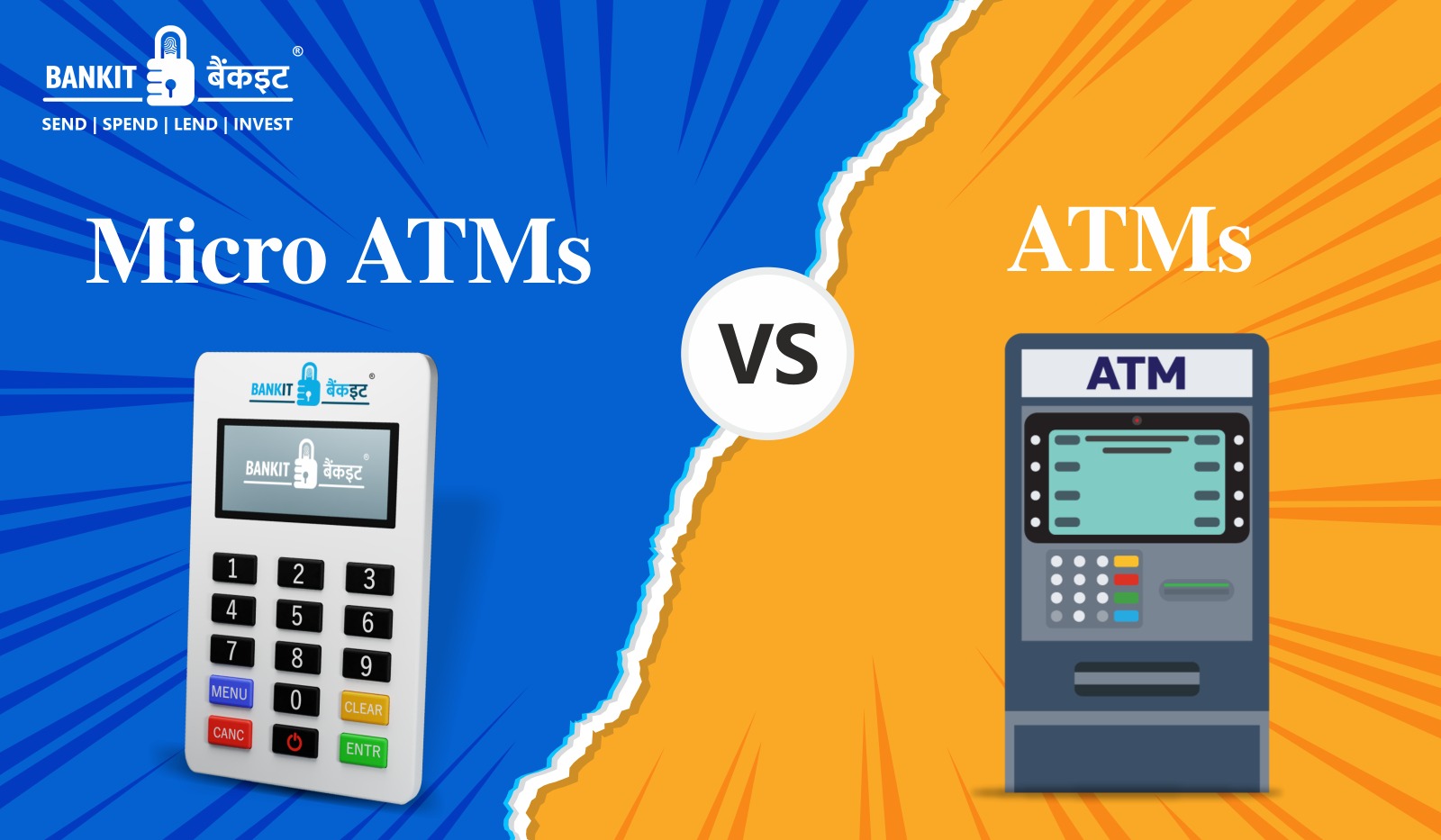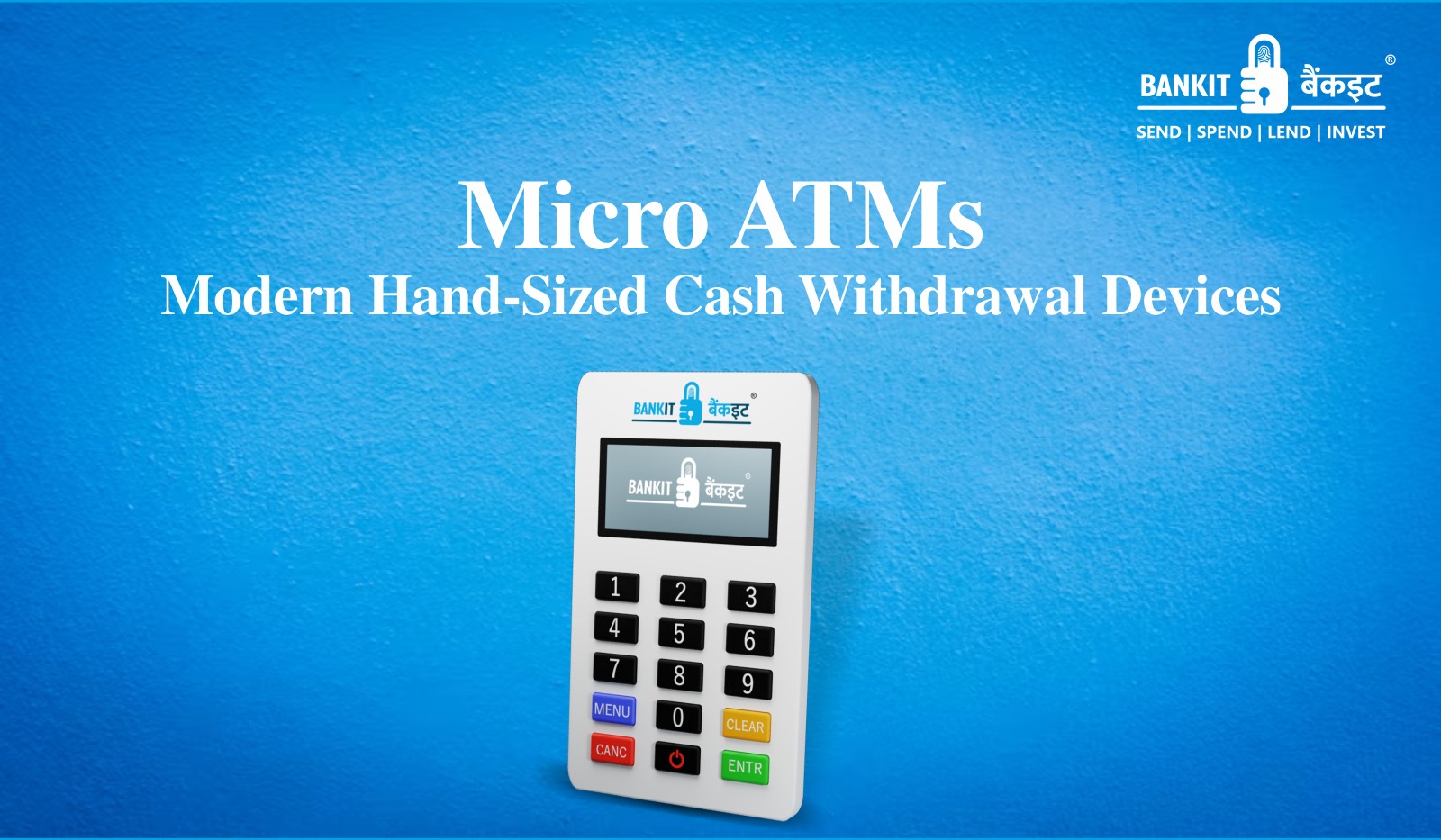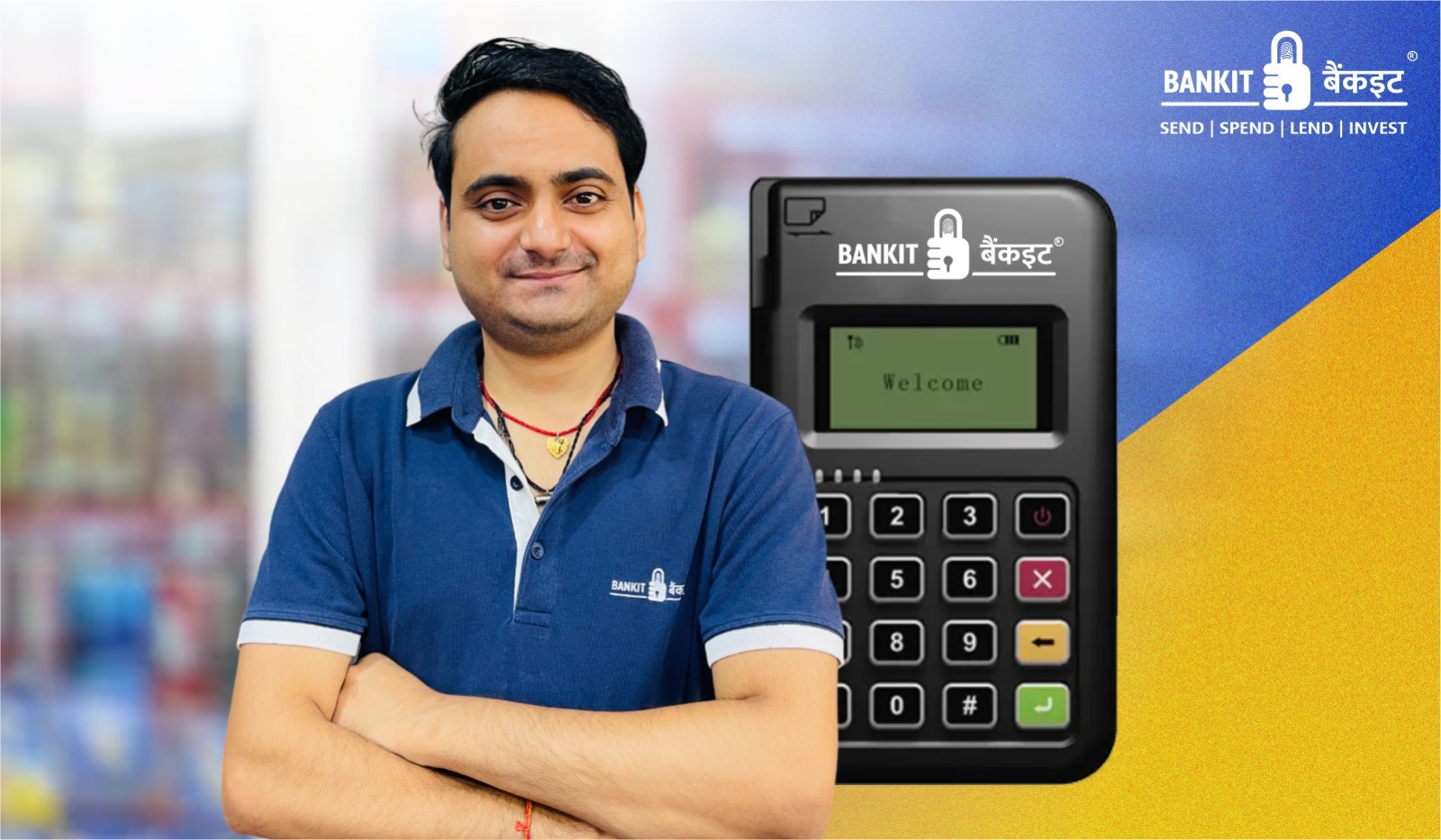What is the difference between ATM and micro-ATM?

We all know that traditional ATMs have revolutionized the way we access cash and perform banking transactions. But what about these Micro ATMs that have been popping up lately?
MiniATMs or Micro ATMs have taken the world by storm. So, what unique do MiniATMs have to offer? Well, let’s just not wonder anymore and explore the battle of the Titans: the ATM versus its compact counterpart, the Micro ATM.
In this blog, we are going to talk about ATMs and their features and functions, and Micro ATMs and their features and functions. We are also going to compare ATMs and Micro ATMs and find out which one is better. So, join us as we compare these two marvels of modern banking technology in a friendly face-off.
What is an ATM?
ATMs, or Automated Teller Machines make banking super convenient for us. They're like magical money dispensers that allow you to access your bank account and perform various transactions without having to visit a physical bank branch.

They're often located in convenient places like shopping malls, gas stations, and bank branches. Just keep an eye out for the familiar logo of your bank or card network, like Visa or Mastercard.
Features and Functions of an ATM
User-friendly Interface:- The ATM has a simple and intuitive touchscreen or keypad interface.
- It guides you through the entire process with easy-to-understand instructions.
- The screen displays clear options to choose from, making it user-friendly.
- One of the primary functions of an ATM is to withdraw cash.
- You can select the amount you need, and the ATM dispenses the money instantly.
- It provides various denominations, so you can choose the bills that suit your needs.
- You can check your account balance using the ATM.
- It shows your available balance on the screen, allowing you to keep track of your funds.
- ATMs enable you to transfer money between your own accounts.
- You can easily move funds from your savings account to your checking account, for example.
- Some ATMs allow you to deposit cash or checks.
- You insert the money or checks into the designated slot, and the ATM verifies and deposits them into your account.
- It saves you a trip to the bank and makes depositing money more convenient.
- ATMs can print out a mini-statement or provide an electronic version.
- You can review recent transactions, including withdrawals, deposits, and transfers.
- If you need to update your Personal Identification Number (PIN), an ATM can help you with that.
- It provides a secure process to change your PIN, ensuring the safety of your account.
- ATMs often offer multiple language options.
- You can choose the language you are most comfortable with to facilitate your transaction.
- Many ATMs are designed with accessibility features for individuals with disabilities.
- These may include audio instructions, larger fonts, Braille keypads, and wheelchair accessibility.
- ATMs are available 24 hours a day, 7 days a week.
- You can access your money and perform transactions at your convenience, even outside of regular banking hours.
ATMs are designed to make your banking experience more convenient and accessible. They offer a range of features and functions to help you manage your finances easily. Now, it’s time to see what Micro ATMs are and how they are unique in their own ways.
What is a Micro ATM?

Micro ATMs, also known as MiniATMs, are compact POS machines, portable versions of traditional ATMs that bring banking convenience right to people’s fingertips. They are small, handheld devices that allow you to perform various banking transactions in the absence of ATMs. Whether you need to withdraw cash or check your account balance, Micro ATMs have got you covered! Micro ATMs are like little buddies that bring banking services to your doorstep.
Features and Functions of an ATM
- Convenient Banking Access: Micro ATMs provide a convenient way to access basic banking services in rural and underbanked areas, bringing banking closer to people's doorstep.
- Card Authentication: Micro ATMs support debit card-based authentication, allowing users to access their accounts using their debit card details.
- Cash Withdrawal: Micro ATMs allow users to withdraw cash from their bank accounts by simply swiping their cards or authenticating themselves with their debit cards. It's a quick and hassle-free way to get cash when needed.
- Balance Inquiry: Users can check their account balance using Micro ATMs. This feature helps individuals stay updated on their finances and plan their transactions accordingly.
- Portable and Easy to Use: Micro ATMs are compact, portable devices that can be easily carried and set up in various locations, such as shops, markets, or even on the go. They have user-friendly interfaces and are designed to be simple to operate, making banking accessible to all.
- Connectivity Options: Micro ATMs support multiple connectivity options, including a cellular network, Wi-Fi, and Bluetooth, allowing them to function in areas with limited or unstable network coverage.
- Transaction Message: After each transaction, the customer receives a message about their Micro ATM transaction. It helps users keep track of their transactions and serves as a proof of the transaction.
Micro ATMs play a crucial role in expanding financial inclusion by extending banking services to underserved communities. With their user-friendly features and versatile functions, they empower individuals and businesses with easy access to banking services, promoting economic growth and financial well-being.
Comparison between ATMs and Micro ATMs

Conventional ATMs (Automated Teller Machines) and modern-day Micro ATMs are both electronic devices that provide access to banking services. However, they differ in terms of functionality, size, and target user base. Here's a comparison between the two:
Functionality:
Conventional ATMs: These machines offer a wide range of services, including cash withdrawals, deposits, fund transfers, and balance inquiries. They are typically connected to a bank's network and can handle complex transactions.
Micro ATMs: Micro ATMs are compact devices designed to offer basic banking services, especially in rural and remote areas. They facilitate cash withdrawals, balance inquiries, and mini statements. Micro ATMs are often operated by business correspondents (BCs) who act as intermediaries between banks and customers.
Size and Portability:
Conventional ATMs: These machines are generally large and require a fixed installation at specific locations, such as bank branches, shopping centres, or public areas. They are not easily portable due to their size and infrastructure requirements.
Micro ATMs: Micro ATMs are much smaller and more portable compared to conventional ATMs. They are handheld devices that can be carried by BCs to various locations, making banking services more accessible to underserved areas.
Connectivity:
Conventional ATMs: These ATMs are typically connected to a bank's central network through dedicated communication lines or internet connections. They rely on robust connectivity to ensure secure and real-time transactions.
Micro ATMs: Micro ATMs often use wireless connectivity options such as mobile networks, Wi-Fi, or Bluetooth to establish a connection with the bank's server. This enables them to function in areas with limited or no internet connectivity.
Target User Base:
Conventional ATMs: These ATMs cater to a broad range of customers, including individuals, businesses, and organizations, providing comprehensive banking services for routine transactions.
Micro ATMs: Micro ATMs primarily serve customers in remote or rural areas where traditional banking infrastructure is limited. They enable basic banking services for individuals who may not have easy access to brick-and-mortar bank branches.
Security:
Conventional ATMs: Due to their complex infrastructure, conventional ATMs employ various security measures, such as PIN verification, card authentication, surveillance cameras, and encryption protocols to ensure secure transactions.
Micro ATMs: Micro ATMs also incorporate security measures like PIN verification and encryption. Additionally, they may use biometric authentication methods like fingerprint scanning for enhanced security.
To summarize, we can say that conventional ATMs provide a wide range of services and are commonly found in urban areas, while Micro ATMs focus on basic banking services and are designed for portability and accessibility in remote or underserved areas. Both types of ATMs play essential roles in facilitating financial transactions and expanding banking services to different segments of the population. So, it’s up to you to decide which one is better among the two.
The main difference between ATMs and Micro ATMs
The main difference between ATMs and Micro ATMs is that ATMs are found in urban areas where digitally literate people can use them, and Micro ATMs are found in rural and unbanked areas where ATMs are not present. ATMs are making the lives of urban people easier and Micro ATMs are making the lives of rural people convenient.
If you happen to be in a bustling urban area with excellent connectivity and find yourself in need of a wide array of banking services, opting for an ATM would be a fantastic choice. However, in case you find yourself in a remote or underserved area where banking infrastructure is limited or does not exist at all, fear not! A Micro ATM can come to your rescue by offering essential banking services and addressing the specific needs of the local population more effectively.
If you want to start a Micro ATM business or want to purchase a Micro ATM device, then consider visiting BANKIT’s website for the same.

